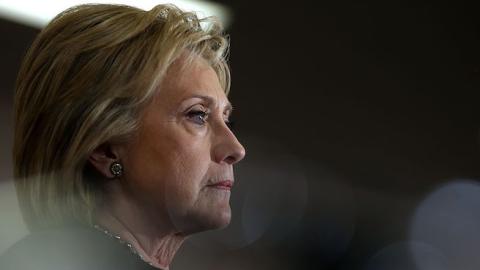One must admire the policy and technological sophistication of Hillary Clinton’s campaign. She recently released a technology policy statement, called a “,” that few Americans will understand in any detail.
Clinton’s agenda has five key elements explained in more than 7,000 words. The detailed prescriptions for continuing many current technology federal programs and beginning new ones are more reminiscent of Al Gore than Bill Clinton, but the length of the exposition is Clintonian, circa 1988 Democrat convention.
As the campaign continues, Mrs. Clinton will learn, as her husband learned, to keep messages direct and simple. Campaign documents should be written to be accessible to everyone, not merely to frequent visitors to the faculty lounge.
The Clinton policy statement has something for everyone: student loan forgiveness for students; broadband availability everywhere for those who don’t have access to broadband; lots of new programs for women and minorities; new computer science education programs for young Americans; more R&D for researchers; improved immigration systems for the current broken ones; and a continuation of network neutrality and other regulations of the Internet through the Federal Communications Commission.
The Obama administration was focused on healthcare through the Department of Health and Human Services with Obamacare, and the next Clinton administration promises to be focused on the Internet through the FCC. Some people cling to the outdated notion that the FCC is an independent agency, not a part of any administration; Mrs. Clinton and her advisors know better.
The Clinton technology policy statement would expand or create dozens of federal programs. No cost estimate is available, but these programs are not free. Just providing broadband access to every American home, no matter how remote, is an expensive undertaking. Perhaps worse, the policy statement emphasizes services being provided by government rather than by private companies.
The big loser in the Clinton policy agenda is likely the Internet. The Internet did not prosper because it was coddled by unending government programs. Rather, it succeeded precisely because it was left alone. Sadly, the bumper stickers “Don’t regulate the Internet” and “Don’t tax the Internet” have not been popular since the 1990s.
The big geographic winner in a Clinton administration will be Washington, DC. Many new government employees will be needed to oversee all of the new and costly programs.
The policy statement has a good point or two, particularly the appointment of a “Chief Innovation Advisor” at the Office of Information and Regulatory Affairs. Of course, most Americans have never heard of OIRA, much less the titles of the people who work there. The policy statement claims that President Clinton will make the “reduction of regulatory barriers to developing new products and services a top priority.” It may be a top priority under the function of a new Chief Innovation Advisor, but much of the remainder of the Clinton policy statement would create enormous new regulatory barriers.
The policy statement does not mention a single regulation that would be repealed or a single tax to be eliminated. Therein lies the fundamental flaw in the Clinton policy statement.
America’s technology and innovation do not suffer from too few government programs. Our future does not depend on expanding existing programs and creating new ones. Rather, America’s economic woes are the result of too many regulations and too many taxes. Aside from suggesting a Chief Innovation Officer, the Clinton policy statement does not focus on either.
If Mrs. Clinton wants a good technology policy, she can write one in about eight words that were once popular around America. They have largely been forgotten: “Don’t regulate the Internet. Don’t tax the Internet.” The 7,000 or more other words in the policy statement will do far more harm than good.



















